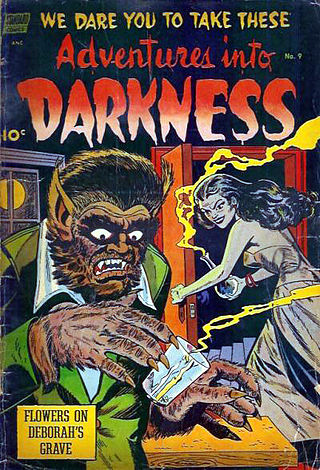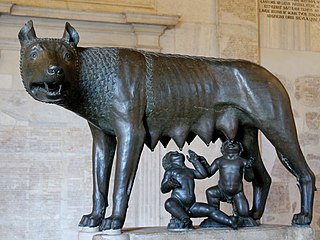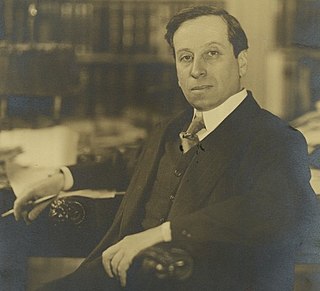
BDSM is a variety of often erotic practices or roleplaying involving bondage, discipline, dominance and submission, sadomasochism, and other related interpersonal dynamics. Given the wide range of practices, some of which may be engaged in by people who do not consider themselves to be practising BDSM, inclusion in the BDSM community or subculture often is said to depend on self-identification and shared experience.

Leopold Ritter von Sacher-Masoch was an Austrian nobleman, writer and journalist, who gained renown for his romantic stories of Galician life. The term masochism is derived from his name, invented by his contemporary, the Austrian psychiatrist Richard von Krafft-Ebing. Masoch did not approve of this use of his name.

A paraphilia is an experience of recurring or intense sexual arousal to atypical objects, places, situations, fantasies, behaviors, or individuals. It has also been defined as a sexual interest in anything other than a legally consenting human partner. Paraphilias are contrasted with normophilic ("normal") sexual interests, although the definition of what makes a sexual interest normal or atypical remains controversial.

In folklore, a werewolf, or occasionally lycanthrope, is an individual who can shape-shift into a wolf, or especially in modern film, a therianthropic hybrid wolf-like creature, either purposely or after being placed under a curse or affliction, often a bite or the occasional scratch from another werewolf, with the transformations occurring on the night of a full moon. Early sources for belief in this ability or affliction, called lycanthropy, are Petronius (27–66) and Gervase of Tilbury (1150–1228).

Algolagnia is a sexual tendency which is defined by deriving sexual pleasure and stimulation from physical pain, often involving an erogenous zone. Studies conducted indicate differences in how the brains of those with algolagnia interpret nerve input.

The Dreaming, also referred to as Dreamtime, is a term devised by early anthropologists to refer to a religio-cultural worldview attributed to Australian Aboriginal mythology. It was originally used by Francis Gillen, quickly adopted by his colleague Sir Baldwin Spencer and thereafter popularised by A. P. Elkin, who, however, later revised his views.

Sadism and masochism, known collectively as sadomasochism, are the derivation of pleasure from acts of respectively inflicting or receiving pain or humiliation. The term originates from Marquis de Sade, a French nobleman known for his libertine sexuality, and Leopold von Sacher-Masoch, an Austrian writer who described masochistic tendencies in his works. Sadomasochism is a subset of BDSM, a variety of erotic practices or roleplaying involving bondage, discipline, dominance, submission, sadism, and masochism.

A Woman in Flames is a 1983 German drama film, directed and co-written by Robert van Ackeren, starring Gudrun Landgrebe, Mathieu Carrière, and Hanns Zischler. The film was selected as the West German entry for the Best Foreign Language Film at the 56th Academy Awards, but was not accepted as a nominee.

Werewolf fiction denotes the portrayal of werewolves and other shapeshifting therianthropes, in the media of literature, drama, film, games and music. Werewolf literature includes folklore, legend, saga, fairy tales, Gothic and horror fiction, fantasy fiction and poetry. Such stories may be supernatural, symbolic or allegorical. A classic cinematic example of the theme is The Wolf Man (1941) which in later films joins with the Frankenstein Monster and Count Dracula as one of the three famous icons of modern day horror. However, werewolf fiction is an exceptionally diverse genre, with ancient folkloric roots and manifold modern re-interpretations.
Clinical lycanthropy is a rare psychiatric syndrome that involves a delusion that the affected person can transform into, has transformed into, or is, a non-human animal. Its name is associated with the mythical condition of lycanthropy, a supernatural affliction in which humans are said to physically shapeshift into wolves. The term is used by researchers mostly in the broader sense of transformation into animals in general, that, strictly speaking, is described as zoanthropy.
Wilhelm Stekel was an Austrian physician and psychologist, who became one of Sigmund Freud's earliest followers, and was once described as "Freud's most distinguished pupil". According to Ernest Jones, "Stekel may be accorded the honour, together with Freud, of having founded the first psycho-analytic society". However, a phrase used by Freud in a letter to Stekel, "the Psychological Society founded by you", suggests that the initiative was entirely Stekel's. Jones also wrote of Stekel that he was "a naturally gifted psychologist with an unusual flair for detecting repressed material". Freud and Stekel later had a falling-out, with Freud announcing in November 1912 that "Stekel is going his own way". A letter from Freud to Stekel dated January 1924 indicates that the falling out was on interpersonal rather than theoretical grounds, and that at some point Freud developed a low opinion of his former associate. He wrote: "I...contradict your often repeated assertion that you were rejected by me on account of scientific differences. This sounds quite good in public but it doesn't correspond with the truth. It was exclusively your personal qualities—usually described as character and behavior—which made collaboration with you impossible for my friends and myself." Stekel's works are translated and published in many languages.

Beyond the Pleasure Principle is a 1920 essay by Sigmund Freud. It marks a major turning point in the formulation of his drive theory, where Freud had previously attributed self-preservation in human behavior to the drives of Eros and the regulation of libido, governed by the pleasure principle. Revising this as inconclusive, Freud theorized beyond the pleasure principle, newly considering the death drives which refers to the tendency towards destruction and annihilation, often expressed through behaviors such as aggression, repetition compulsion, and self-destructiveness.

The wolf is a common motif in the foundational mythologies and cosmologies of peoples throughout Eurasia and North America, and also plays a role in ancient European cultures. The modern trope of the Big Bad Wolf arises from European folklore. The wolf holds great importance in the cultures and religions of many nomadic peoples, such as those of the Eurasian steppe and North American Plains.
Richard Alaric Zeeman is a fictional character in the Anita Blake: Vampire Hunter series of novels by Laurell K. Hamilton.

Venus in Furs is a novella by the Austrian author Leopold von Sacher-Masoch, and the best known of his works. The novel was to be part of an epic series that Sacher-Masoch envisioned called Legacy of Cain. Venus in Furs was part of Love, the first volume of the series. It was published in 1870.

Lycanthropy is the first studio album by English singer-songwriter Patrick Wolf and was recorded over the eight years between 1994 and 2002. It was critically acclaimed at the time of its release, as was his next effort, Wind in the Wires.

Robert Eisler was an Austrian Jewish polymath who wrote about the topics of mythology, comparative religion, the Gospels, monetary policy, art history, history of science, psychoanalysis, politics, astrology, history of currency, and value theory. He lectured at the Sorbonne and Oxford, served briefly on the International Committee on Intellectual Cooperation in Paris after World War I, and spent fifteen months imprisoned in Dachau and Buchenwald, where he developed heart disease. He is best remembered today for advancing a new picture of the historical Jesus based on his interpretation of the Slavonic Josephus manuscript tradition, proposing a dual currency system to control inflation, and arguing for a prehistoric derivation of human violence in Man into Wolf: An Anthropological Interpretation of Sadism, Masochism, and Lycanthropy. His life and work intersected with those of Sigmund Freud, Carl Jung, Alois Riegl, Gilbert Murray, Karl Popper, Hugo von Hofmannsthal, G. R. S. Mead, Aby Warburg, Fritz Saxl, Gershom Scholem, Oskar Goldberg, Martin Buber, and Walter Benjamin.
Boanthropy is a psychological disorder in which a human believes themselves to be a bovine.
According to some classification systems, Sexual masochism disorder is the condition of experiencing recurring and intense sexual arousal in response to enduring moderate or extreme pain, suffering, or humiliation. The Diagnostic and Statistical Manual (DSM-5) of the American Psychiatric Association indicates that a person may have a masochistic sexual interest but that the diagnosis of sexual masochism disorder would only apply to individuals who also report psychosocial difficulties because of it.

Masochism: Coldness and Cruelty is a 1967 book by the philosopher Gilles Deleuze, originally published in French as Le Froid et le Cruel, in which the author philosophically examines the work of the late 19th-century Austrian novelist Leopold von Sacher-Masoch. In the Foreword Deleuze states that Masoch has a particular way of "desexualising love while at the same time sexualizing the entire history of humanity". Deleuze attempts to "cut through" the various forms of expression and content that are the artistic creation of Leopold von Sacher-Masoch. He also attempts to develop a problematic of masochism in contradistinction to sadism, concluding that the two forms of 'pornology' are non-communicating, and cannot be integrated into Sadomasochistic entity. Deleuze argues that Masochism is something far more subtle and complex than the enjoyment of pain and that Masochism has nothing to do with Sadism.















